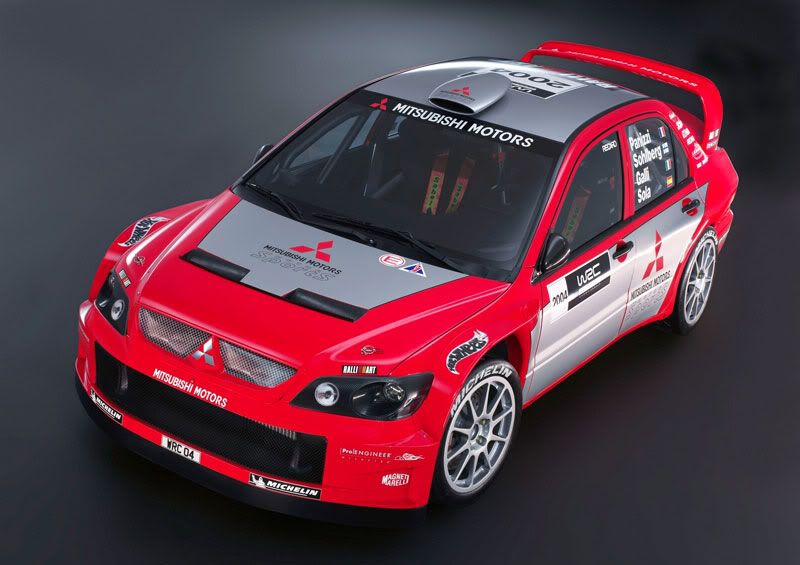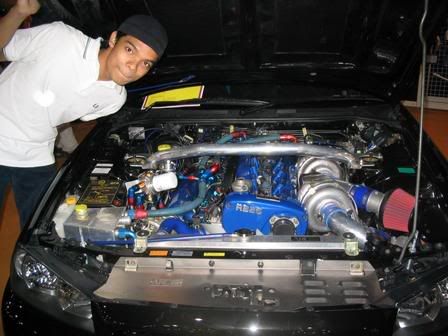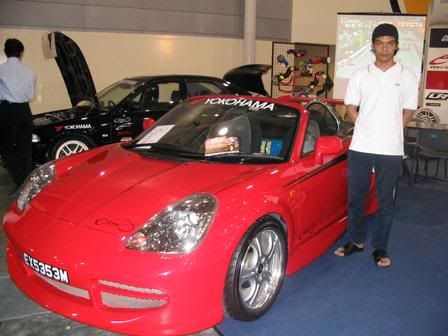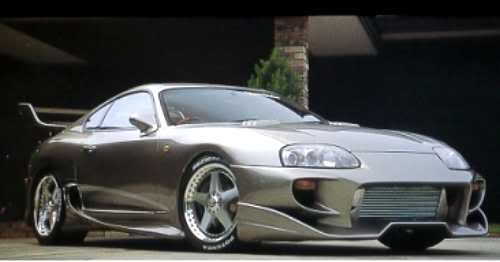wrc 2004

The Lancer WRC04’s appearance reflects the increasing importance of aerodynamics in World Championship rallying. MMSP spent almost three weeks testing in the Lola racing team’s wind tunnel, re-designing the bonnet, along with the front and rear wings, as well as the rear aerofoil. The first priority was to gain more downforce, but close attention was also paid to airflow through the engine bay to maximise cooling. It is a perfect illustration of the strenuous yet conflicting demands that the World Rally Championship imposes. Downforce is a vital element of a competitive car on high-speed rallies, but good cooling is a key requirement on a turbocharged rally car, as the ambient temperature on rallies can exceed 30 degrees Celsius and it is often highest on the rallies held at the lowest average speeds. Airflow beneath the car was also considered.
The 16-valve, twin-cam, two-litre engine belongs to the 4G6 family used so successfully in previous Lancers. It employs the well proven cast iron block and an aluminium alloy cylinder head, but it has also benefited from significant alteration. First and foremost, it is based on the version of the engine fitted to the new and highly popular Lancer Evo VIII showroom car, but with a new turbocharger, fitted with the regulation 34-millimetre intake restrictor, new intake and exhaust manifolds, and new internals. Although the bore and stroke remain unchanged, the crankshaft, connecting rods and pistons have been lightened and the electronic management systems are new. MMSP has turned to Magneti Marelli to supply its electronics for the first time, using an advanced engine management package that doesn’t rely on fuses or circuit breakers. There are two control units, one for the engine and one for the chassis. As the system is fully integrated, each is capable of controlling all electronic functions throughout the car. The system saves weight and enhances reliability.
The transmission also reflects MMSP’s new strategy and has nothing in common with the four-wheel-drive systems used on previous Lancers. The 2004 car will use a transversely mounted five-speed gearbox supplied by Ricardo. The gearchange will be manual and all three differentials will be passive, an epicyclic centre differential splitting torque front to rear. The front and rear differentials will also operate on mechanical principles.
The decision to use passive differentials is unusual, but reflects MMSP’s determination to ensure that the chassis is fundamentally sound and effective before introducing refinements. A semi-automatic gearchange is likely to be developed during 2004, once MMSP is satisfied that the Lancer WRC04 is living up to its potential, in terms of both performance and durability. Active differentials are also under consideration, but are not an immediate priority.
Brembo will supply brakes and once again, MMSP is placing the accent on simplicity. The braking system will not incorporate water cooling initially.


 A site For All u Car lovers..........
A site For All u Car lovers..........
0 Comments:
Post a Comment
<< Home